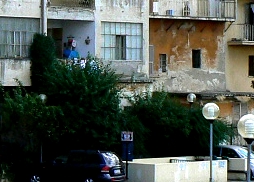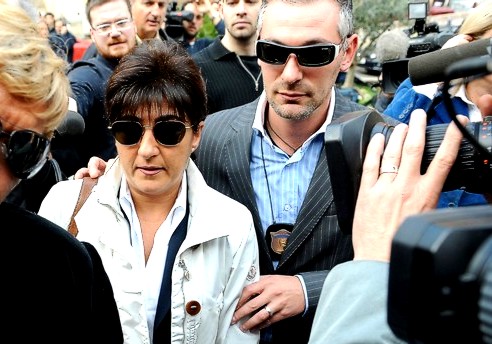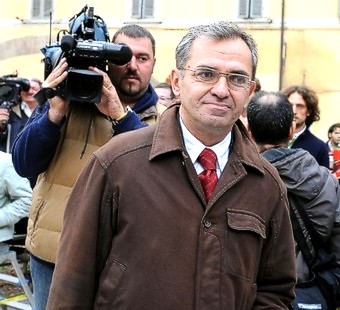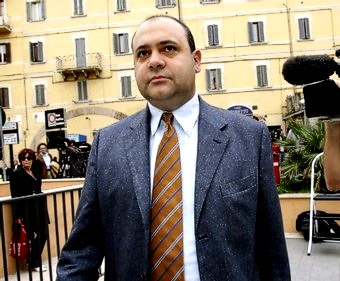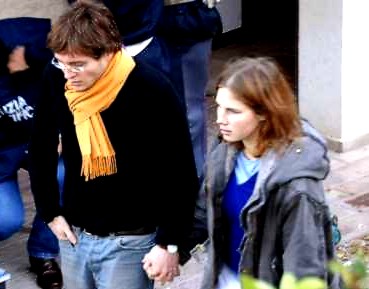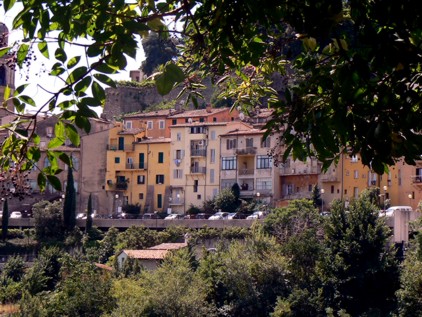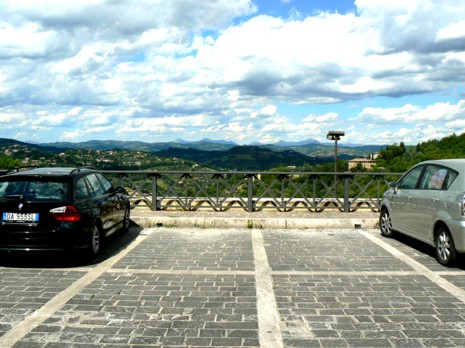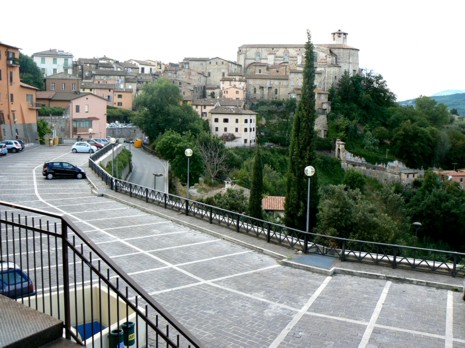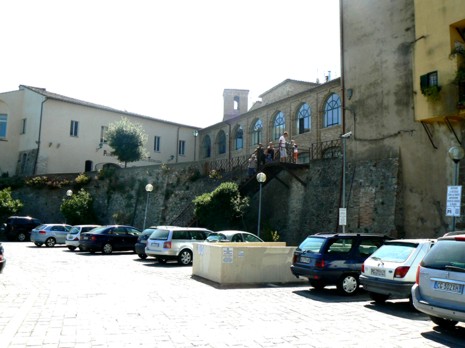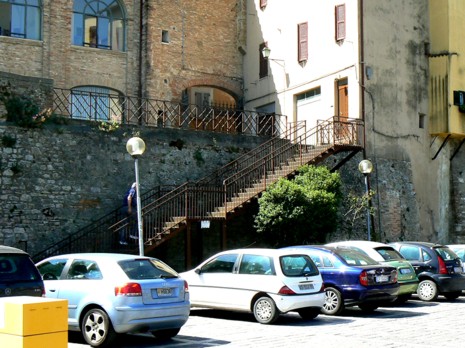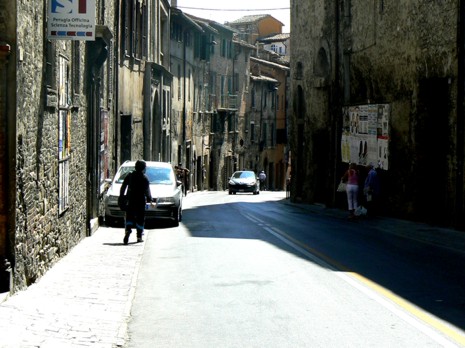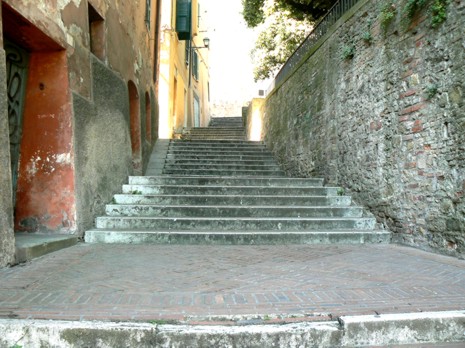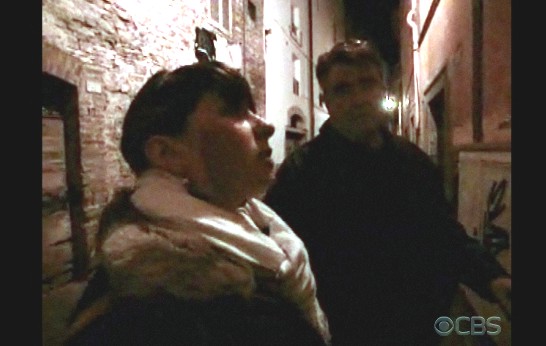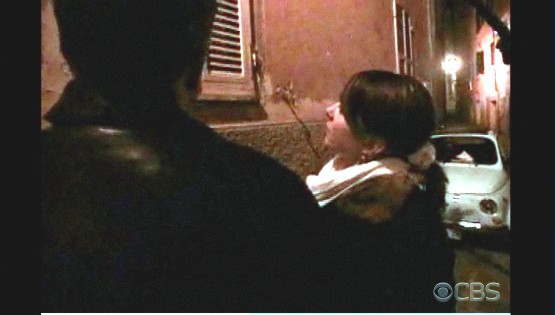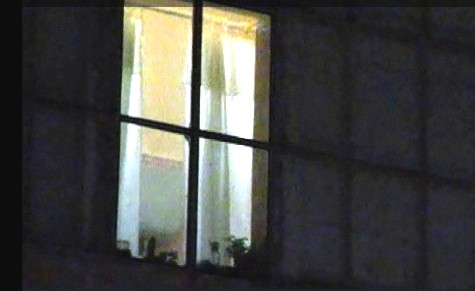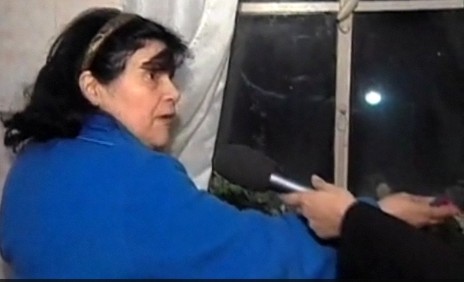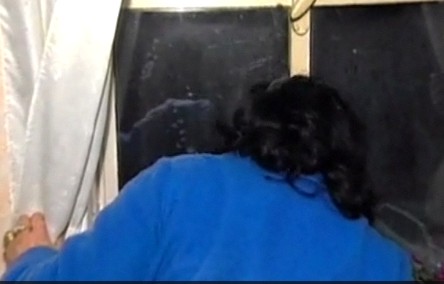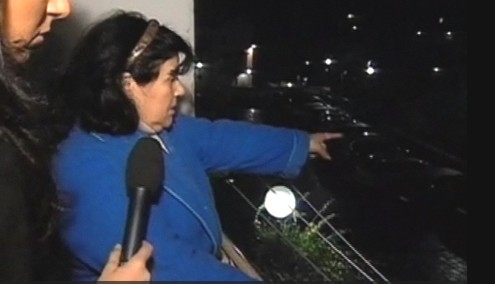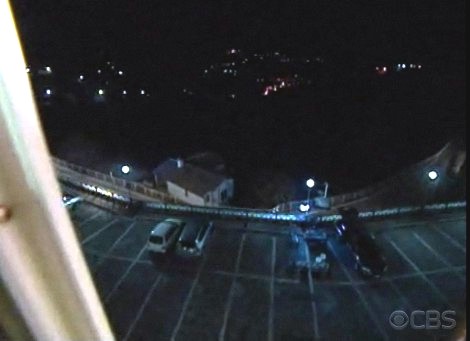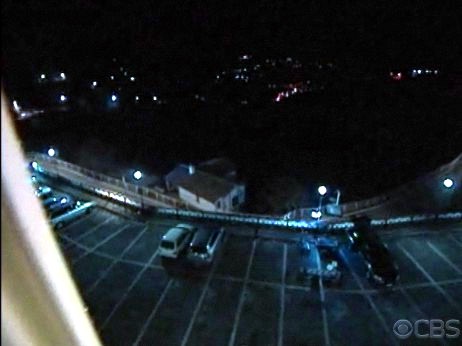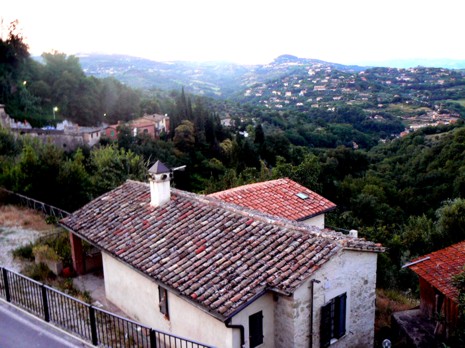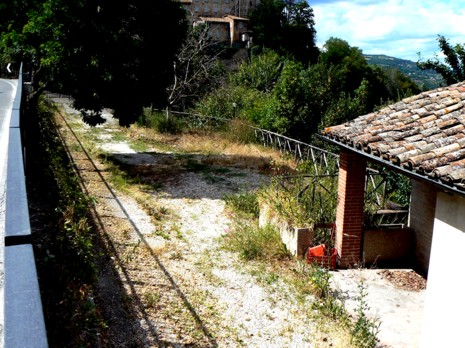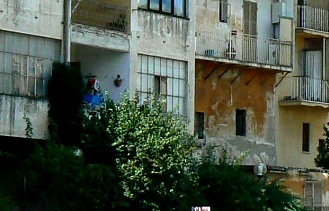
Political & economic headsup: US is demonstrating unsorted systems problems in spades. Do watch your investments. As Washington DC policy gets more & more off-target, big New York investors are betting very heavily that stocks will soon crash. Gross systems mismanagement 2017-20 tanked stocks several times.
Wednesday, October 29, 2008
Next-Day Press: A Good Take By Andrea Vogt For Hearst’s Seattle Post-Intelligencer EDIT
Posted by Peter Quennell
PERUGIA, Italy—A little more than a month from now, Amanda Knox and Raffaele Sollecito will stand trial for murder in an Italian courtroom. For Americans following the case, it’ll seem a little strange.
The trial is expected to be open to the public—in stark contrast with the series of closed-door hearings held over the past year just to get to this point.
Under Italian law, Knox and Sollecito could be held in prison for several years during the trial and appeals, if any, but this case is likely to take only months to play out because there’s already been an unusual amount of trial preparation, according to legal observers.
Unlike a typical criminal trial in the United States, the Italian version is longer—often taking months to get to a verdict.
Until two decades ago, the trial process here was similar to that of France, but recent reforms have brought the system closer to what might be expected in an American trial.
There are usually six civilian jurors and two judges, one of whom serves as the “president” of the jury and helps manage the procedural elements of the trial. All of the jurors, including the judges, are chosen randomly.
Although it’s a sensational case, Knox and Sollecito will probably be tried in Perugia, a central Italian city with a population of about 340,000. A change of venue to another city jurisdiction is seldom granted.
The capital of the region of Umbria, Perugia is known for its high-profile jazz festival each summer, its chocolate fair in the fall and as a magnet for international students. But the influx of foreign students and tourists belies how the real Perugia operates, many say.
“It is a paradoxical city,” said veteran Italian journalist Meo Ponte, who is covering the case for the Italian daily La Republica and lived several years in Perugia before transferring to Turin.
“It has the dimension of a small town,” he said, “but because of its large student population, it also has the openness of a large, cosmopolitan city.”
A Good Profile Of Guede, Now Starting His 10,950 Days EDIT
Posted by Peter Quennell
By Nick Squires in Perugia
9:09AM GMT 29 Oct 2008
Within days of Meredith Kercher’s half-naked body being found in Perugia last November, key suspect Rudy Hermann Guede, 21, fled the Umbrian hill town and jumped on a train to Germany.
His flight across the Alps sparked an international manhunt. Italian police wanted him in connection with Miss Kercher’s brutal killing, having found his bloody hand print on a pillow at the scene of the crime.
During a desperate few days on the run, he slept rough in empty train carriages and on a barge on the Rhine.
At one point he was contacted on Facebook by journalists, including the Daily Telegraph’s correspondent, and engaged in an online chat in which he protested his innocence.
On November 20, nearly three weeks after the murder, he was stopped on a Frankfurt-bound train near Mainz after a conductor found him without a ticket.
He was arrested, held for two weeks in a German prison and extradited back to Italy to face charges of murder and aggravated sexual assault.
It was all so different from the life of opportunity his immigrant father had envisaged when he left his native Ivory Coast in the early 1990s with five-year-old Rudy in tow.
Leaving his wife behind, Pacome Roger Guede settled in Perugia, Umbria’s provincial capital, and found work as a building site labourer.
He put down roots in the university town but after a decade decided to return to West Africa, leaving the teenage Rudy in the care of an Italian family, who looked after him as their own son.
For all their good intentions, he developed into a troubled youth, skipping school, dabbling in drugs and dropping out of courses in accountancy and hotel management.
He lived for a time in Milan and proudly posted on his Facebook site a photograph taken of him with Giorgio Armani in the fashion guru’s bar.
His adoptive father, wealthy local entrepreneur Paolo Caporali, 63, told the Italian national newspaper La Repubblica: “It is pointless to hide the fact that for me, Rudy was a disappointment. I hoped to help him build a future. I thought I had given him an opportunity. But as the months passed I understood I was mistaken, that my hopes were all met with delusion.
“He said he was at school, but he skipped class. He preferred to spend the day in front of the television or with video games. He had little wish to study, and even less to work.”
Rudy was thrown out ““ cut loose from those who cared for him for the second time in his life - and drifted into a rootless existence of part-time work, petty crime and drug dealing.
In the evenings and at weekends he mingled with the thousands of students who are drawn to Perugia each year to learn Italian at the town’s University for Foreigners.
He played basketball on the concrete court just up the hill from the house which Miss Kercher shared with Miss Knox and two other students, becoming friendly with the people living in a basement flat.
Through them he met Miss Kercher in a bar at a Halloween party, the night before the murder.
Four days before the party, he was in Milan and broke into a nursery school so that he could spend the night there.
He was armed with an 11-inch kitchen knife, telling police he had to “protect” himself against thieves.
In a 25-page handwritten note he gave to police after his arrest, Guede said he regretted leaving Miss Kercher to die from her injuries. “Had I been a man, I would have saved Meredith”. Instead, he fled the scene and did not call the emergency services.
He described the scene he came across in chilling terms. “When I closed my eyes, I could only see red. I have never seen so much blood. All of that blood on her beautiful face.”
And the inevitable bluster about appealing. Good luck on that one, Rudy.
Next-Day Press: How The Suspects Enjoyed Their Day In Court EDIT
Posted by Peter Quennell
Click above for the translation from Ansa.
Actually, it seems they spent the day locked up in the basement. Down below everybody else’s feet. And simply not enjoying it at all.
Presumably they were trotted upstairs one at a time, to be told of the finding by Judge Paolo Micheli.
Guede seems to have remained cool, but Knox and Sollecito were both visibly distressed at their outcomes.
Hard landings. Perhaps a case of too many rosy scenarios. Of lawyers, friends and families failing to let them down easy,
Tuesday, October 28, 2008
Guede Gets 30 Years, Knox & Sollecito Trial Starts December 4 EDIT
Posted by Peter Quennell
[PHOTO PENDING]
Lee Glendinning of the UK Guardian reports:
Rudy Guede has tonight been sentenced to 30 years in prison for the murder of British student Meredith Kercher, an Italian judge has ruled.
The judge at the court in Perugia also ruled that there was sufficient evidence available for Amanda Knox and Rafaelle Sollecito to stand full trial for Kercher’s murder.
Knox, 21, a US student, and Sollecito, 24, an Italian IT graduate, were
accused of having killed Kercher in the course of a sex game that went wrong, alongside Rudy Hermann Guede, 21.Kercher’s semi-naked body was found on November 2 in her bedroom in the cottage she shared with Knox. Her throat had been cut.
Lawyer Francesco Maresca, who represents Miss Kercher’s family, said: “We are very satisfied, even though this was a young man who faces a very heavy sentence.”
For the past two months, Guede, from Ivory Coast, has been involved in a fast-track trial at his own request on charges of murder and attempted sexual assault. He has the right to appeal the sentence.
At the same time, judge Paolo Micheli listened to evidence from lawyers for Knox and Sollecito in pre-trial hearings to decide whether the pair should face trial over the student’s murder.
Knox and Sollecito have been held in jail since shortly after the murder and the judge has tonight indicated that he would not grant their requests for house arrest. The trial is set to begin on December 4….
Dramatic Day For Guede, Knox, Sollecito: The Cast Arrives
Posted by Peter Quennell
[click for larger images]
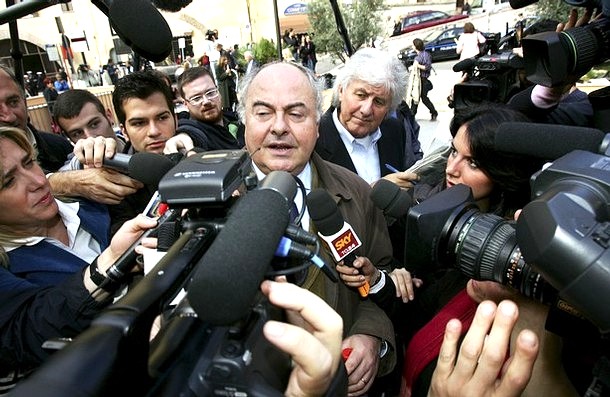
Above: Prosecutor Mignini
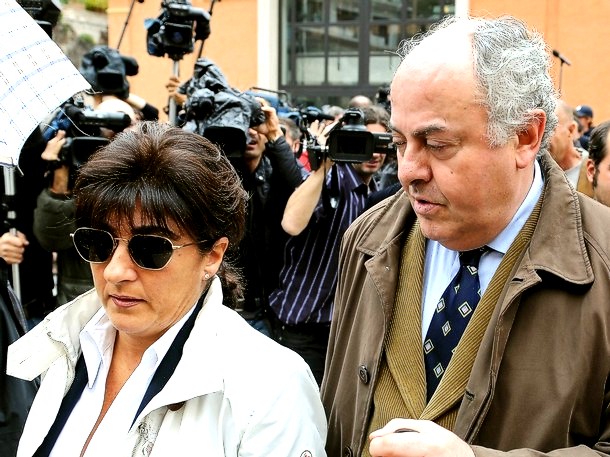
Above: Prosecutors Mignini and Comodi

Above: Kercher family lawyer Maresca
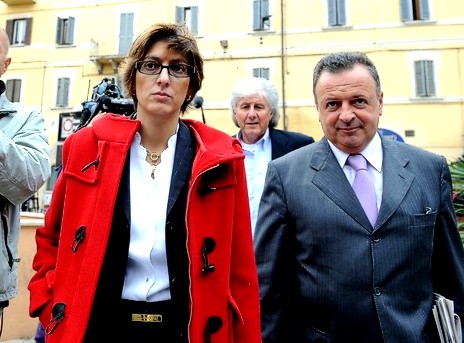
Above:Sollecito lawyers Buongiorno and Mauri

Above: Knox lawyers Ghirgha and Vedova
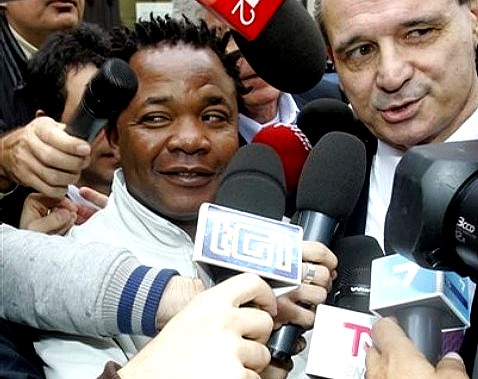
Above: Falsely accused Lumumba and lawyer Pacelli
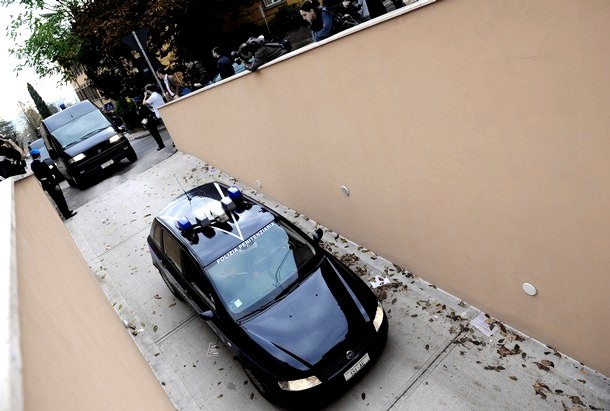
Above: And the defendants; in the vans
Monday, October 27, 2008
Peter Popham Of “The Independent” Has Drunk Knox PR Kool-Aid
Posted by Peter Quennell
Popham’s Bias Against Italy
Among the European papers The Independent is really standing out now for its coverage of the Kercher case.
A long list of wrong and omitted facts. And a great deal of biased editorial comment masquerading as straight reporting. All the work of Peter Popham, the Independent’s Rome reporter.
Check out some of Popham’s Rome Notebook pieces, in which he comes across as contemptuous of Italy and all things Italian.
If Popham has actually published anything sympathetic to Italy in his time there, we are unable to spot it. The Italian police and justice system seem particular targets of his scorn.
Ignored: Mountain of Evidence
By mid-year 2008 the main accumulation of evidence was complete and extremely extensive. It had already been reviewed twice by the Supreme Court and found to be strong.
A flavor of it was available to any reporter who bothered to attend the many preliminary hearings in 2008 summarised here. To our knowledge, the lazy, opinionated and slapdash reporter Peter Popham never did.
Popham Again Channels Knox PR
Here now is Popham’s latest garbling of the real case. We put what is obvious bias in bold.
See our corrections below.
Peter Popham: A chance to redeem Italian justice
Rome Notebook: When he gives his verdict, Judge Paolo Micheli has the opportunity to redeem the reputation of Italian justice somewhat
If the prosecutors in the Meredith Kercher murder case had wanted to give the world a demonstration of what is wrong with Italian justice, they could hardly have done a better job.
Amanda Knox and Raffaele Sollecito have been in jail since last November…. The evidence? [only] household tiffs between Amanda and Meredith in the flat they shared. Amanda supposedly invited undesirable men back to the house. Raffaele wrote in his diary that he sought “extreme experiences” (he had apparently been a virgin till meeting Amanda a fortnight before.) Yet the girls cohabited well enough…
After allegedly killing their friend, did they flee? Not at all. Next morning they called the police, and hung around to give statements. In the absence of other suspects, prosecutors accused them of murder with an African friend. Unfortunately for the prosecutors, Patrick Lumumba had never even set foot in Mez’s flat and eventually they had to let him go.
Two weeks after the murder, scientists found bloody fingerprints on a cushion under Mez’s body which belonged to a drug dealer and serial house-breaker called Rudy Guede, who had gone on the run right after the murder. The crime, it seemed, was solved ““ but prosecutors clung to their original theorem, merely substituting one African for another.
When he gives his verdict, Judge Paolo Micheli has the opportunity to redeem the reputation of Italian justice somewhat. Though if he sends Guede to jail for life and frees the other two, the cries of “racist” and “American dupe” will doubtless be raucous.
Our corrections of Popham
1. The evidence is merely household tiffs? Really? What of the small mountain of damning witness testimony, luminol and other forensic evidence, and eyewitness accounts? Why does Popham make zero mention of that?
2. Hung around and called the police? Actually, the Postal Police turned up of their own accord and seemingly interrupted a rearrangement of the crime scene in progress.
3. Sollecito’s calls to the Perugia Central Police Station seem to have been made only in frantic catch-up mode - some minutes later.
4. The police messed up over Patrick Lumumba? Actually, he was fingered by a self-proclaimed eyewitness: Amanda Knox. Strongly. And not just once; several times. For which criminal slander, of course, both the prosecutor and Patrick Lumumba are now suing… Knox!
5. Rudy Guede is “a drug dealer and serial house-breaker”? Really? Is there ANY proof of that? Popham is happy to decry racist stereotypes and yet propagates them himself.
Still, it is interesting to know that Knox deflowered Sollecito. We can thank Popham for that mental image…
Sollecito Team Turns Sharply Against Knox? This Is Extraordinary, A Really Big Deal
Posted by Our Main Posters
Breaking News In London Times
A report says Sollecito places Knox at the scene of the crime.
As she had herself as well, twice, in the evening before her arrest. Still, a surprise move coming so soon after this truce.
The report, by Richard Owen from Perugia for the UK Times went online on the Times website three hours ago.
It also confirms what case-watchers already know; that tomorrow, Tuesday, is quite a cliff-hanger for the third defendant, Rudy Guede, who may be convicted and possibly sentenced right there and then.
Amanda Knox, the American flatmate of the murdered British student Meredith Kercher, has for the first time been implicated as being at the scene of the crime by her former Italian boyfriend.
With a verdict imminent in the pre-trial hearings over the murder in Perugia almost a year ago, the three suspects in the case appear to have turned on each other.
After the conclusion of the hearings, Judge Paolo Micheli, 44, a former Carabinieri officer who has been a magistrate since 1990, will decide tomorrow whether Ms Knox and Raffaele Sollecito, her former boyfriend, should stand trial for the murder.
At the same time, he is also due to convict or clear Rudy Guede, the Ivory Coast immigrant who is accused by prosecutors of taking part in the killing, but who has opted for a fast track trial in the hope of a reduced sentence if found guilty.
Lawyers for Mr Sollecito have told the judge that, according to a forensic expert called by the defence, Ms Knox’s DNA is on Ms Kercher’s bloodied bra-strap as well as that of Mr Sollecito and Rudy Guede.
Professor Francesco Vinci, the forensic scientist, said the DNA traces were “too contaminated” to be useable as evidence, but showed the presence of “at least three people”.
The admission appears to support the prosecution case that all three were present at the scene of the crime.
It also breaks a [recent] tacit pact between Ms Knox and Mr Sollecito, who have sent each other supportive letters while in custody and until now have avoided incriminating each other. Mr Sollecito even sent Ms Knox flowers on her birthday this summer.
Lawyers for both Mr Sollecito and Ms Knox have repeatedly claimed the couple spent the night of the murder at Mr Sollecito’s flat, indicating that Mr Guede was the lone killer.
Today, the prosecution and defence lawyers will present their closing arguments. They will argue that if a trial date is set, the suspects should be released from prison into house arrest. Ms Knox has asked to be housed at San Fatucchio, a supervised community and farm in the Umbrian countryside, 40 kilometres from Perugia, for recovering drug addicts and young offenders run by the Catholic charity Caritas.
Last weekend Walter Biscotti, one of Mr Guede’s lawyers, accused Ms Knox and Mr Sollecito of framing his client, a drifter and small-time drug dealer who was brought up in Perugia and mingled with the student community. “We believe Knox and Sollecito were the murderers,” Nicodemo Gentile, another of Mr Guede’s lawyers said.
Mr Biscotti said Mr Guede, the only one of the three who admits he was at the hillside cottage Ms Knox shared with Ms Kercher on the evening of the murder, admitted attempting to have consensual sex with Ms Kercher, but had not raped or killed her. The prosecution says that Mr Guede’s DNA was on Ms Kercher’s bloodstained pillow.
Ms Kercher was found last November semi-naked in her bedroom with her throat cut. The prosecution claims she was assaulted just after Hallo’een in a murderous sex game, possibly inspired by a Japanese comic strip about vampires which Mr Sollecito had been reading.
Prosecutors say that Ms Knox stabbed her flatmate while the other two forced her to her knees and held her down, with Mr Sollecito pinning her by the arms and Mr Guede holding her by the throat.
Ms Knox’s lawyers reject this, saying Ms Kercher was assaulted by “one robust killer”. Last week, Ms Knox burst into tears when the allegation was made in court that she stabbed Ms Kercher, saying: “Meredith was my friend, I had no reason to kill her.”
Mr Guede claims he was listening to his iPod in the bathroom when Ms Kercher was killed in the bedroom. He fled to Germany after the killing, but was tracked down three weeks later in Germany.
Mr Sollecito’s defence team, headed by Giulia Bongiorno, a high profile lawyer and parliamentary deputy, brought props including a shop window mannequin wearing a bra into court last week to back their case. They claim “a thief”, who they suggest was Mr Guede, smashed a window to enter the cottage and killed Ms Kercher when she returned and recognised him, fleeing with her two mobile phones.
Ms Bongiorno argued that the presence of Mr Sollecito’s DNA on the bra fastener but not the rest of the garment proved it was due to contamination and mishandling by police forensic scientists.
Hmmm. Perhaps Rudy Guede should back out of the short-form trial (where the chips are loaded against him but the sentence is guaranteed shorter) and go for the long-form trial instead?
Oh, and better send more flowers, Raffaelle. She is going to be ticked at this one.
Thursday, October 23, 2008
PR Shill Jan Goodwin Shows Extraordinary Bias
Posted by The Machine
I’ve just read perhaps the most shockingly biased article yet about the case.
It is by Jan Goodwin and appears in the magazine Marie Clare. Here’s the opening paragraph:
Studying abroad should have been a grand adventure. Instead, Amanda Knox has spent a year in jail, accused by a corrupt legal system of murdering her roommate.
For starters, the journalist makes the wild and unsubstantiated accusation that the Italian legal system is corrupt.
Amanda has been sitting in prison for a year now, while the Italian press dissects her past and her behavior, framing her as a sex-crazed ugly American who didn’t properly mourn the death of her roommate. Did she kill her, or is Amanda but the latest in a long line of women deemed guilty in the court of public opinion for acting in ways that subvert the script? Be it the U.K.‘s Kate McCann or Australia’s Lindy Chamberlain, both of whom were judged harshly in the disappearances of their daughters, a woman’s demeanor and the way she grieves is sometimes her greatest crime.
Have the Italian press really spent a year dissecting Amanda’s past and her behaviour? I certainly haven’t seen one reference to Amanda being an “sex-crazed ugly American” in the Italian press and I’ve been reading the Italian articles for months.
Jan Goodwin seems very confused.
Amanda is sitting in jail, not because she has been found guilty in the court of public opinion for acting in ways that subvert the script, her demeanor or the ways she grieved, and Amanda showed no grief whatsoever over Meredith’s death, but because the evidence against her is overwhelming.
The judges at the Italian Supreme Court told Amanda: “The clues against you are serious.” The judge at the preliminary hearings in the case, Claudia Metteini, also noted that there were “serious clues of guilt”.
Jan Goodwin’s article goes onto to say:
On the morning of November 2, everything changed. As she remembers it, Amanda returned home from a night at Raffaele’s and found a few drops of blood in her bathroom and the door to Meredith’s bedroom locked.
Jan Goodwin should have researched her story more carefully. If she had seen the photograph of the blue bathmat in the bathroom, she would know that it wasn’t “a few drops of blood”, but actually a bloody footprint. It’s apparent that Jan Goodwin really knows very little about the case:
They broke into Meredith’s bedroom and discovered her lying in a pool of blood, half-naked, her windpipe crushed in an attempted strangulation and her throat partially slashed.
There were three knife wounds on Meredith’s neck. Two lesser wounds, but the final one was delivered with such brutal force, it left a huge, gaping hole in Meredith’s neck. There was nothing partial about it. Whoever inflicted the fatal wound wanted to kill Meredith.
Jan Goodwin’s article seems deliberately misleading to give the impression that there isn’t much evidence against Amanda and Raffaele:
Three days after the murder, the senior police investigator on the case sought out Amanda and Raffaele to question them. When he discovered them casually eating in a pizza restaurant, he grew suspicious. Soon after, they were arrested. “That was how it started,” says Paul Ciolino, an American forensic examiner who was the primary investigative adviser for the Innocence Project, which has helped exonerate more than 215 prisoners jailed in the U.S.
No, the police were actually suspicious of Amanda and Raffaele because they both lied to the postal police from the very first time they spoke to them.
Example: they told the postal police they had phoned the police and were waiting for them. Raffaele admitted in his witness on 5 and 6 November they hadn’t actually phoned the police before the postal police turned up unexpectedly:
I tried to force the door but couldn’t, and at that point I decided to call my sister for advice because she is a Carabinieri officer. She told me to dial 112 (the Italian emergency number) but at that moment the postal police arrived.” He added: “In my former statement I told you a load of rubbish because I believed Amanda’s version of what happened and did not think about the inconsistencies.
CCTV footage shows the postal police arriving at the cottage at 12.35 on 2 November. Raffaele phoned the police at 12.51 and 12.54.
[Quoting Paul Ciolino again] “I was stunned that this was why he suspected Amanda and her boyfriend were involved in the crime,” he says. “These two kids, never in trouble, classic middle-class college students “” it’s ludicrous that they were implicated.”
Amanda Knox was arrested for hosting a party that got seriously out of hand with students high on drink and drugs and throwing rocks into the road, forcing cars to swerve.
The students then threw rocks at the windows of neighbours who had called the police. The situation was so bad that police reinforcements had to be called. Amanda was fined $269 (£135) at the Municipal Court after the incident - Crime No: 071830624.
Amanda’s friend Madison Paxton makes the following comment: “The papers have called her a drugged-up skank, and that’s just incredibly untrue. She respects her body; she doesn’t like to party too much.”
I think Amanda’s neighbours would wholeheartedly disagree that Amanda doesn’t like to party too much. Amanda herself made the claim that she had smoked so much cannabis she (conveniently) couldn’t remember much about what happened on the night of the murder. She doesn’t sound like somebody who doesn’t like to party too much.
In grade school, Amanda’s soccer teammates nicknamed her “Foxy Knoxy” because she would crouch down like a fox on the playing field. European tabloids picked up on the name, calling her “Foxy Knoxy: a sex-mad American party girl.
European newspapers, including the quality newspapers, called Amanda by the nickname she called herself. She would have known at the age of 20 that the word “foxy” has sexual connotations. Amanda made a conscious choice to use a nickname with sexual connotations. The newspapers were simply using the nickname that she used.
After her arrest, Amanda was detained by the police and interrogated for 14 hours.
Actually, Amanda was being questioned as a witness, and the claim that her interrogation lasted 14 hours has widely been demonstrated to be untrue.
I’m struggling to find a single correct fact in this next paragraph:
Since then, the police investigation has been chaotic and bumbling. Take the alleged murder weapon, a cooking knife that belonged to Raffaele. Amanda’s DNA was found on the handle “” not surprising, since she used it for cooking “” and officials said Meredith’s DNA had been found on the blade. But new DNA evidence released shows that after 183 attempts to match the material on the knife to Meredith’s DNA, there is only a 1 percent chance that it is hers, making it unlikely that the knife is, in fact, the murder weapon.
At a recent hearing, Renato Biondo, from the forensic police, said, “We are confirming the reliability of the information collected from the scene of the crime and at the same time, the professionalism and excellence of our work.” Paolo Micheli wanted independent confirmation that the forensic scientists had followed all the correct procedures and their findings were completely accurate. Renato Biondo provided this confirmation unequivocably.
The crime scene wasn’t “violated”. The possibility of Meredith’s bra clasp being contaminated was excluded by Patrizia Stefanoni, and she also confirmed that Meredith’s DNA was on the blade and Amanda’s DNA was on handle of the knife that was hidden in a shoe box at Raffaele’s apartment.
The defence lawyers were putting on brave faces, but that hearing proved a truly disastrous day for Amanda and Raffaele. Raffaele had been placed in Meredith’s room, removing her bra, and Amanda’s DNA was on the knife that was almost certainly used to kill Meredith.
A knife that had been intentionally cleaned. A knife that was placed on Meredith’s bed sheet and that left a bloody trace on it. A knife that matches the wound on Meredith’s neck.
The claim that there is only 1 percent chance of the DNA on the blade belonging to Meredith is not surprisingly not attributed to anybody, let alone an independent forensic expert.
The following statement is outrageous and deeply offensive to the victim herself:
There is also no indication that Meredith was subjected to sexual violence..
This is a claim that has been frequently made by Amanda’s Knox supporters.
To suggest that there was consensual sexual activity between Meredith and Rudy defies belief. Meredith did not consent to any of the unspeakable horrors that were inflicted upon her that night.
Jan Goodwin follows a well-rehearsed and overused script when outlining the case for Amanda’s “innocence”:
Miraculously, Amanda did finally get a break when the Italian supreme court tossed out the results of her interrogation this past spring on the grounds that she had not been provided with a lawyer or interpreter.
Miraculously?!
What Amanda Knox’s supporters invariably forget to mention is that one of Amanda’s statements in which she admits to being at the cottage on the night of the murder was not “tossed” out by the Italian Supreme Court. Her letter to the police is almost identical in content to the statements that were not admitted as evidence. This incriminating letter was admitted as evidence.
Jan Goodwin should have written a balanced and objective article, not an anti-victim piece, and done some actual reading and research. She has instead written for MarieClaire what is essentially a free advertisement for the Free Amanda Knox Campaign.
She could have asked pertinent questions, such as why did Amanda deliberately and repeatedly lied to the police, or why did Amanda and Raffaele give not only conflicting witness statements, but also completely different accounts of where they were and what they were doing on the night of the murder.
But Jan Goodwin seemingly didn’t. And presumably MarieClaire’s editor paid her, regardless.
Thursday, October 02, 2008
PR Shill Candace Dempsey Abuses The Real Victim Here
Posted by Skeptical Bystander

[Shots here are of Seattle Post-Intelligencer’s owner Hearst Media’s building in Manhattan[
When an article about a controversial subject manages to tick everyone off, this might mean the author has achieved a certain level of neutrality!
Rachel Donadio’s brief article in the NY Times recapping the main developments in the Meredith Kercher murder case, is neutral, using this yardstick.
- For people who have already decided Amanda Knox is guilty, Donadio left out important details needed to expose the case against Knox.
- And for people who have already decided on Knox’s innocence, Donadio committed the unpardonable sin of allowing Francesco Maresca, the Kercher family’s increasingly vocal legal counsel, to voice this opinion: “The important thing is they were all there,” he said. “All three are responsible.”
In at least one critical respect, the Italian criminal justice system may be better than its US counterpart. In Italy, the family of the VICTIM has the right to legal representation. This seems to perplexe many in the Knox defense camp.
But anyone who has survived the murder of a loved one will understand why it is so important. They will also understand why comments of the kind being posted on Candace Dempsey’s defense blog hosted by Heart’s Seattle Post-Intelligencer are so reprehensible, and why they must be called out as such.
Kelly13, the first poster to weigh in, notes that Maresca has been increasingly vocal about Knox’s involvement and that he recently expressed dismay at the Supreme Court’s decision to throw out Knox’s oral confession. So far, at least, Kelly13 is factual and limits his remarks to Maresca.
But then he goes to work on the Kerchers:
Despite their carefully crafted direct statements expressing a desire for justice, clearly the Kerchers have made up their minds and they don’t strike me as nice or objective people. I wonder if they have created legal liability for themselves, certainly Mr. Maresca can be sued for this unproven claim made against Amanda.
It is hard to pass judgment on “people” who have only spoken to the press twice (that I know of) and who have read brief prepared statements each time. But what struck me as really strange about this comment was how inaccurate and mean it sounded.
Then I remembered where I had read similar sentiments”¦ on the same Dempsey defense blog, about six months ago, by the same poster too. He is a self-proclaimed faith-based activist who says he lobbies for US citizens jailed abroad. Earlier, he noted blithely that the Kerchers needed to “set aside” their grief and jump on the free AK bandwagon.
A few of the few posters on Dempsey’s site tried to explain why his most recent comments were unacceptable, but with Dempsey they were wasting their time.
In reply to those who disagreed, Kelly13 said he knew
...folks who have been through even worse and they had the backbone to stand up against obvious injustice. The least the Kerchers could do is just stay silent and keep their lawyer under control. To fail to do so undermines Amanda’s right to fairness, contributes to her unjust confinement, and shifts focus away from the tragedy that is Meredith. It’s very hard, but in the interest of justice and fairness their lawyer needs to shut up, and only they can affect that.
End of subject for him. He begins his next paragraph: “Moving on”¦”
These comments were still standing today. I note this only because Candace Dempsey has gained huge notoriety mainly for her heavy thumb on the delete button for posts that go against her bias.
Maresca’s current view of the case will ultimately be proven right or wrong. The family has filed a civil suit for damages against whomever is found guilty, which means that it and its counsel now have access to the 10,000 pages of material submitted by the prosecutor. Maresca’s opinion just might reflect his deep conviction, based on an examination of the evidence.
Furthermore, the Kerchers silence might also be due to their belief that justice is taking its course. They owe nothing, not one thing, to Amanda Knox, Raffaele Sollecito or Rudy Guede.
Conversely, those with a vested interest in the outcome of this case for any of the three suspects owe it to the Kerchers to keep these thoughts to themselves. It is appalling to read on Dempsey’s blog that Kelly13 hopes the Kerchers will ultimately find themselves at the other end of a lawsuit.
It is so appalling under the circumstances that it is physically revolting. Especially considering how utterly restrained the Kerchers have been with respect to the media and how relatively restrained their lawyer has been. In fact, it is incredible to even have to say this. Kelly13, where were you when brains and hearts were being passed out?
In any case, Maresca’s words in the NY Times will have no impact on Judge Micheli, who is presiding over the pre-trial hearing. Micheli, who already knows what Maresca thinks, is also doing his job “” which is to examine the evidence, hear the challenges, and decide whether or not to press charges.
Maresca may be a thorn in the side of those who have already decided that at least two of the suspects are innocent, but he plays a vital role for the Kercher family. For just about any surviving victim of a murdered person who has been through the criminal justice process, this is a no-brainer.
The comments about the Kercher family on Hearst’s defense blog make me incredibly sad for this family which has shown remarkable restraint and dignity for almost one year.
Back in January, speaking to Meredith’s hometown paper the Croydon Guardian, Maresca noted: “Meredith’s parents continue to suffer enormously and they faithfully await news of every hearing as they are doing so today. Their objective is to reach the truth of their daughter’s murder out of respect for her memory.”
The surviving Kerchers also deserve a little respect, even in the blogosphere, where anyone can say anything. It doesn’t matter what you think about who did what and why.
Shame on you, Candace Dempsey, for this scurrilous anti-victim blog, and shame on Hearst for hosting it too.

Sunday, September 28, 2008
Test Your Grasp Of The Evidence: Locate The Witness’s Apartment
Posted by Kermit
1. Key Location: Signora Nara’s Apartment
The Meredith case is a puzzling and very complicated one, with a talented, hard-working and very appealing girl student, Meredith Kercher, as its sad victim.
Set in an exotic old Italian university town (which normally sees no murders) in another country and under another legal system for most followers. With the main reporting in Italian.
With the victim of one nationality and the suspects of three other nationalities. With limited public information released by police and prosecutors, and with some smoke blown by the defense teams and their enablers.
Analyzing the case based on the public information available at any one time might remind you of peeling the layers of onions. A lot of onions.
Here now is one example of the peeling of an onion. It concerns the evidence of a close neighbor who claims to have heard some telling sounds. Despite some attempts to harass her, the signora and her testimony emerge looking pretty credible.
Signora Nara (her first name) lives in an apartment somewhere above the house of the victim and one of the defendants. She thinks she heard a terrible scream - and then some running footsteps down in front of her apartment somewhere above the girls’ house.
Where her place is really matters because, if she is too far away or at the wrong angle, her evidence becomes a lot less credible.
You need all of these shots to understand her situation. The essential clue as to which one it is is hiding in plain site here. It was Kermit on the pro-evidence forum (Kermit knows Perugia and has studied the key locations in great depth) who first spotted it, around 10 days ago.The answer is at bottom here.
2. The Various Clues Hiding In Plain Sight
Below: Signora Nara’s apartment is in fact clearly visible somewhere in this shot
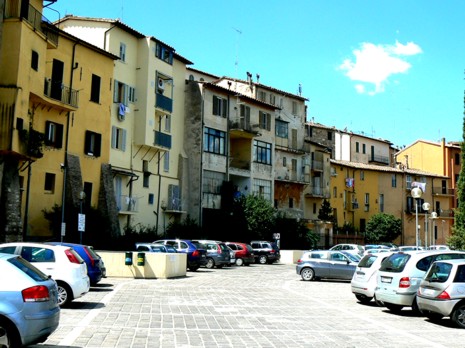
Below: The girls’ house cannot be seen from the basement floors of those house
Below: The roof of the girls’ house CAN be seen from apartments one flight up
Below: These are the steel stairs where Signora Nara says she heard climbing footsteps
Below: Again, the steel stairs where Signora Nara says she heard climbing footsteps
Below: The main street south of her apartment; her front door is in a passage left of and parallel to this
Below: This is that parallel passage, here at its west end, emerging (left) onto the stairs by a park
Below: A CBS investigator and a translator in that passage outside Signora Nara’s front door
Below: The CBS investigator and translator again in that passage - at the ground-floor flat
Below: Her bathroom window seen from the parking facility at what is the BACK of her unit
Below: Two shots of Singnora Nara looking to the left and down from that bathroom window
Below: Shot of her on her balcony looking down and to the left - to the girls’ house
Below: Shots of the roof of the girls’ house; they are from one floor above Signora Nara’s
Below: Roof of the girls’ house in daylight from a similar location - not very far away
Below: And its gravel parking area where she claims she heard some of the footsteps
3. And The Vital Clue Is…
Below: The vital clue is this bathroom window - surrounded by an extensive mock window facade
4. And Therefore Her Apartment Is…
Below: The ONLY second-level apartment with a mock facade and balcony is above the trees at center here
